As a great many watch lovers know, straps and bracelets can make or break a watch. While some might find the “vintage” appearance of mesh too delicate for today’s watches, for me mesh remains one of the most beautiful ways to dress up a watch, whether new or old.
And for those in warm or tropical countries, mesh bracelets have the advantage of a very long lifespan compared to leather straps.
It is not always apparent how much work has gone into the smoothness, comfort, and design of a metal bracelet’s manufacture. And a mesh bracelet is one of the most comfortable in existence: because there are no links, it doesn’t catch arm hair and it feels silky and smooth on the skin.
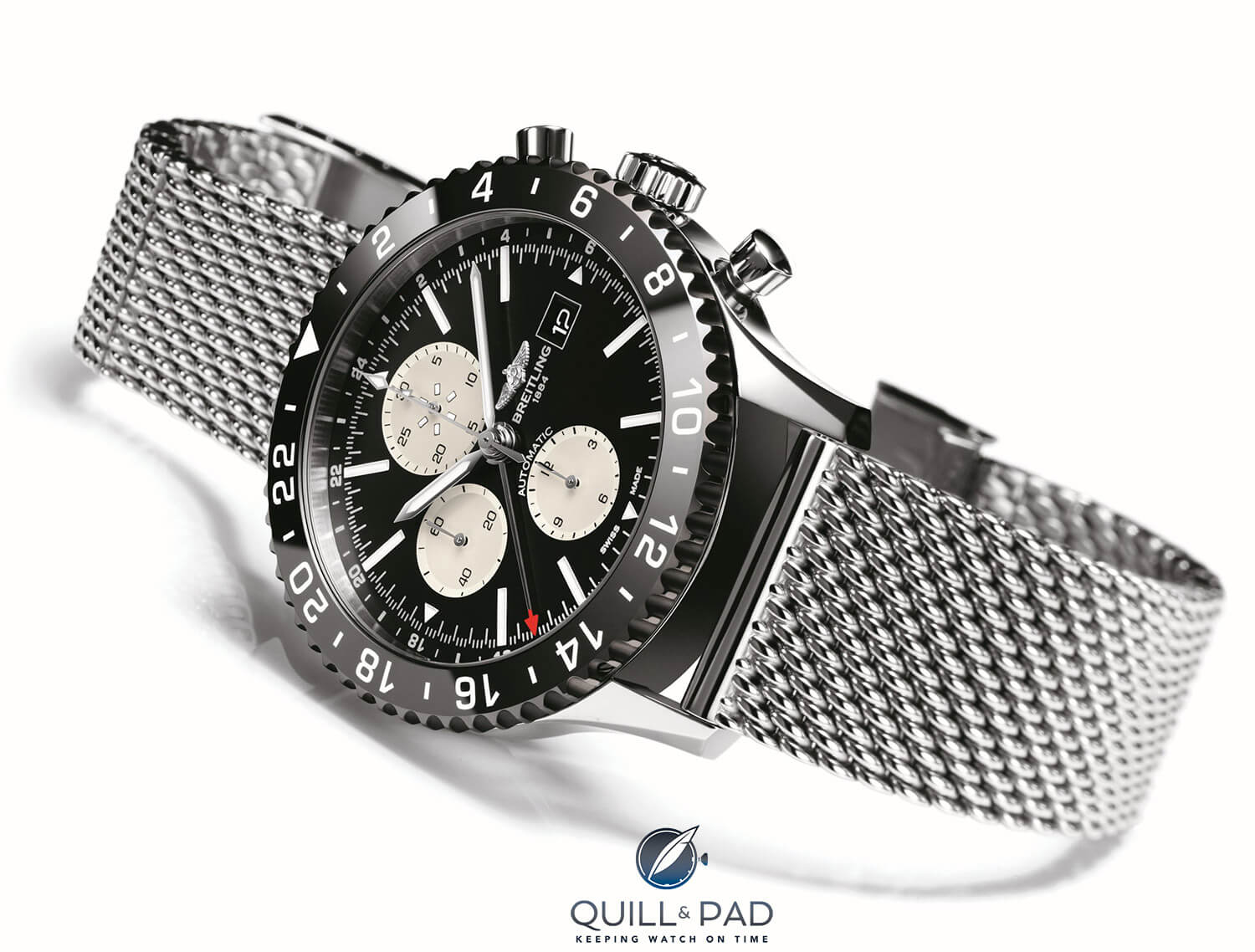
A Breitling Chronoliner from 2015 on a factory mesh bracelet
If you’ve ever looked into this type of bracelet before, you will know that there are price differences among mesh bracelets. Many bracelets found on today’s Swiss or German watches were manufactured, or at least partially manufactured, in the Far East. And while those products are good in both looks and quality, they are almost 100 percent machine-made.
In fact, there are very few factories left these days that make their bracelets almost entirely by hand.
The best quality mesh bracelets almost always come from Staib, which was established in 1922 in Pforzheim, Germany.
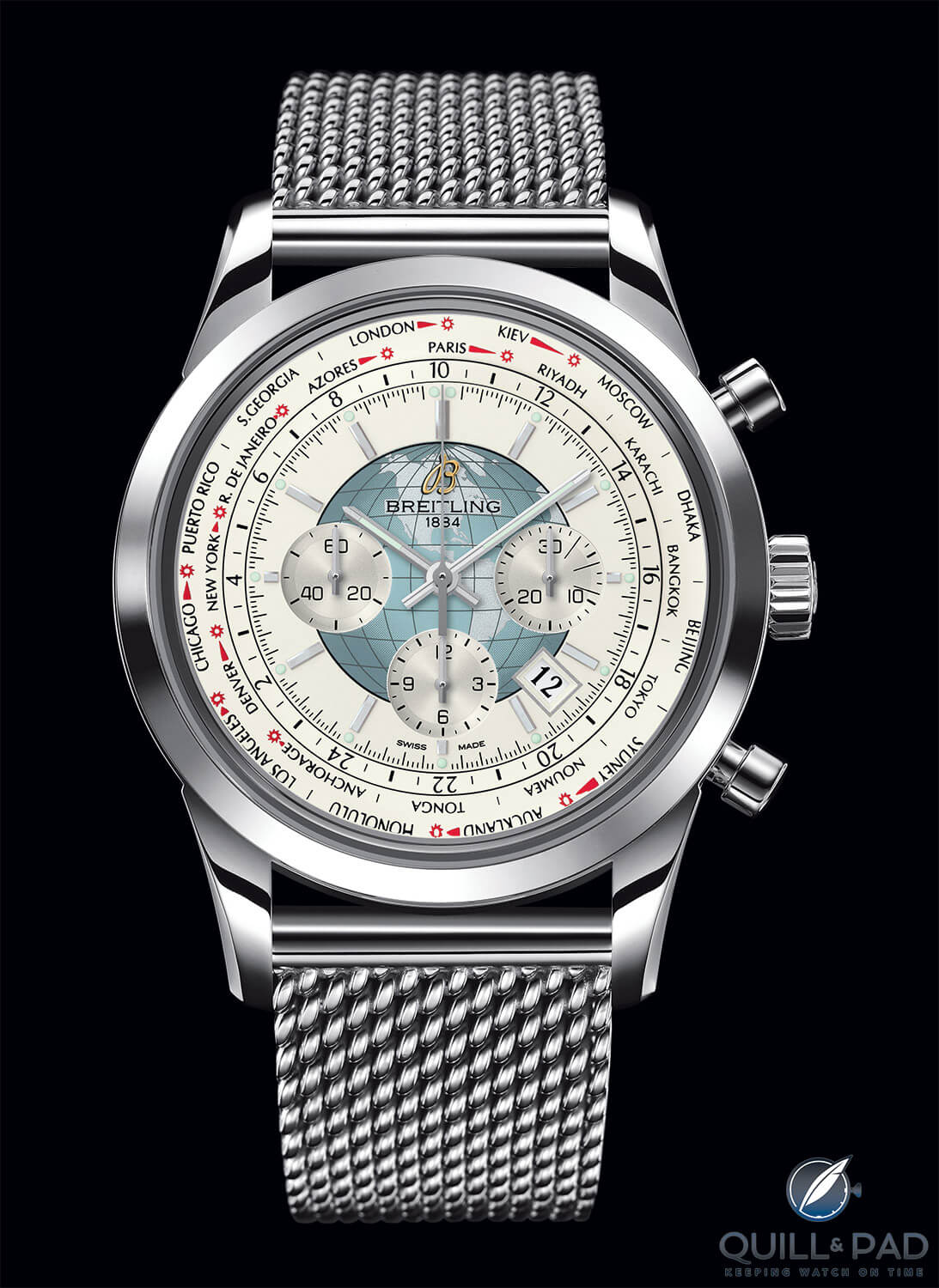
Breitling discovered the advantages of mesh early on: here on a 2012 Transocean Chronograph Unitime
Mesh or milanaise: how is it made?
Mesh is also known by the name milanaise or milanese (“of Milan”).
The technique for making mesh bracelets was apparently already known to the ancients, confirmed by findings at Etruscan graves.
During the Renaissance and baroque eras, goldsmiths in Milan made mesh from hand-wound wire spiral coils, which they fashioned into bracelets and necklaces. These jewelry pieces made of woven metal material were named for the place of their birth. Since then, the word milanaise (sometimes seen as milanese) has been used as the technical term for mesh within the watch industry.
It is possible to manufacture this material entirely automatically, but the quality is significantly lower than that of handmade mesh. A great deal of qualified work done by hand is needed to ensure the qualitative level necessary to any smooth and attractive watch bracelet, but most especially one made of this beautiful metal.
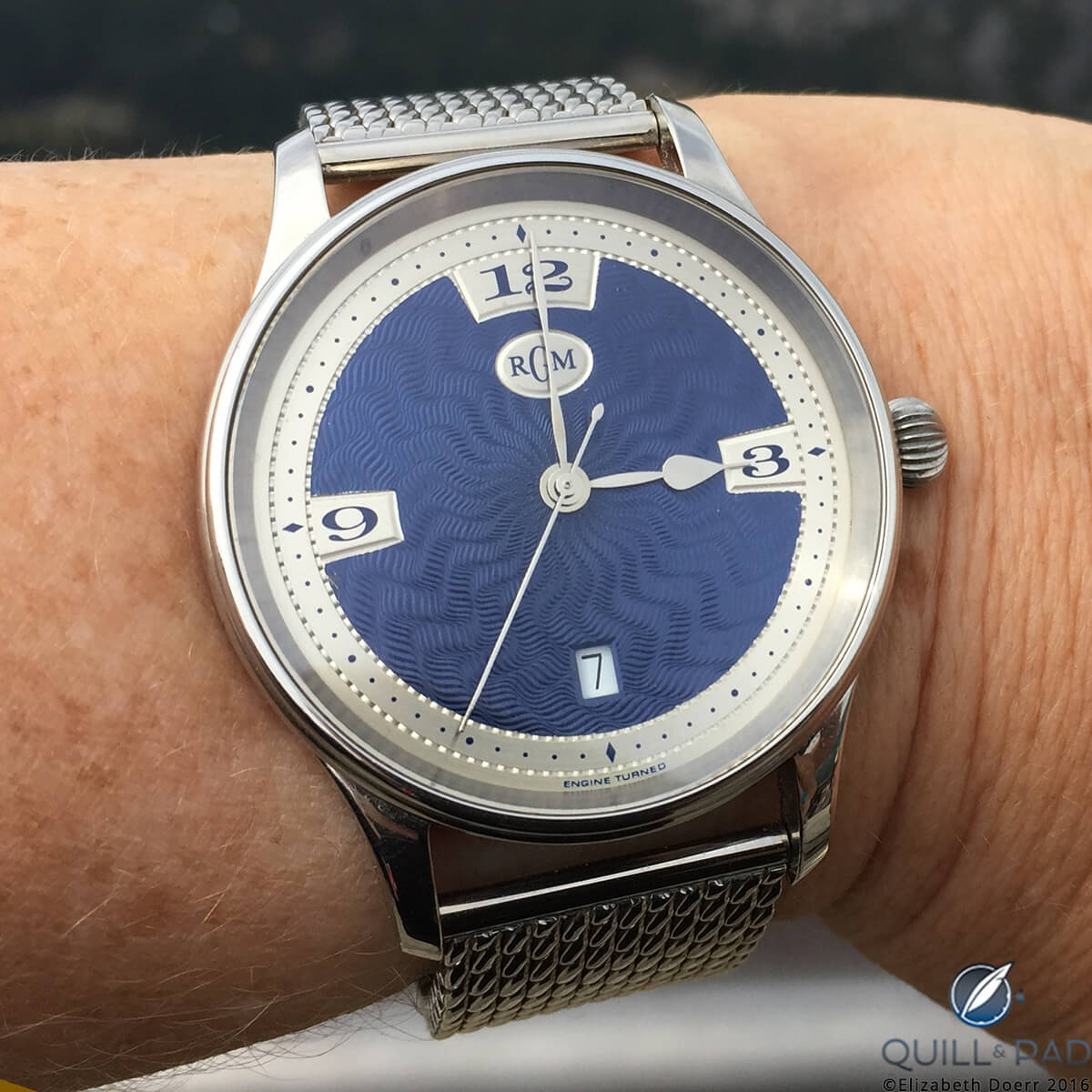
Elizabeth Doerr replaced the strap of her RGM Reference 151BE with a beautiful Staib mesh bracelet
Staib manufactures high-quality milanaise, some of which is used by the company for the bracelets it sells and some of which is sold to other manufacturers to produce their own products.
At Staib, woven “blankets” are first created that are cut, shaped, and soldered as needed depending on their final use. The steps needed to reach the blanket stage include annealing, trimming, cleaning, and polishing. The blanket edges need to be carefully pressed and condensed so that they do not unravel as a knit sweater might if it is cut.
Milanaise weave comprises rows and rows of wire, coiled together, woven into each other by long machines that look like automatic long lathes, but which are specially built for the job. Staib works with wires of all metals – steel, gold, silver, and platinum – from 0.20 to 2 millimeters in thickness.
The carpets are carefully trimmed to get rid of any sharp edges that may have been created during cutting. Some of the mesh carpets are pressed by very powerful machines to give them another pattern or structure.
Every time the material is worked, it becomes a bit stiffer. For this reason, it is annealed in an oven after every step so that it relaxes again. Stainless steel is annealed at more than 1,000°C.
After the last annealing step, the mesh blanket is shaken out by machine and rolled over hard rubber to make it flexible again. When using gold or especially delicate mesh, such as that seen on the 2018 Audemars Piguet Millenary, this is done manually.
After being cut and pressed, the clasp elements are added. And then it only needs to be cleaned, polished, and dried in large dryers.
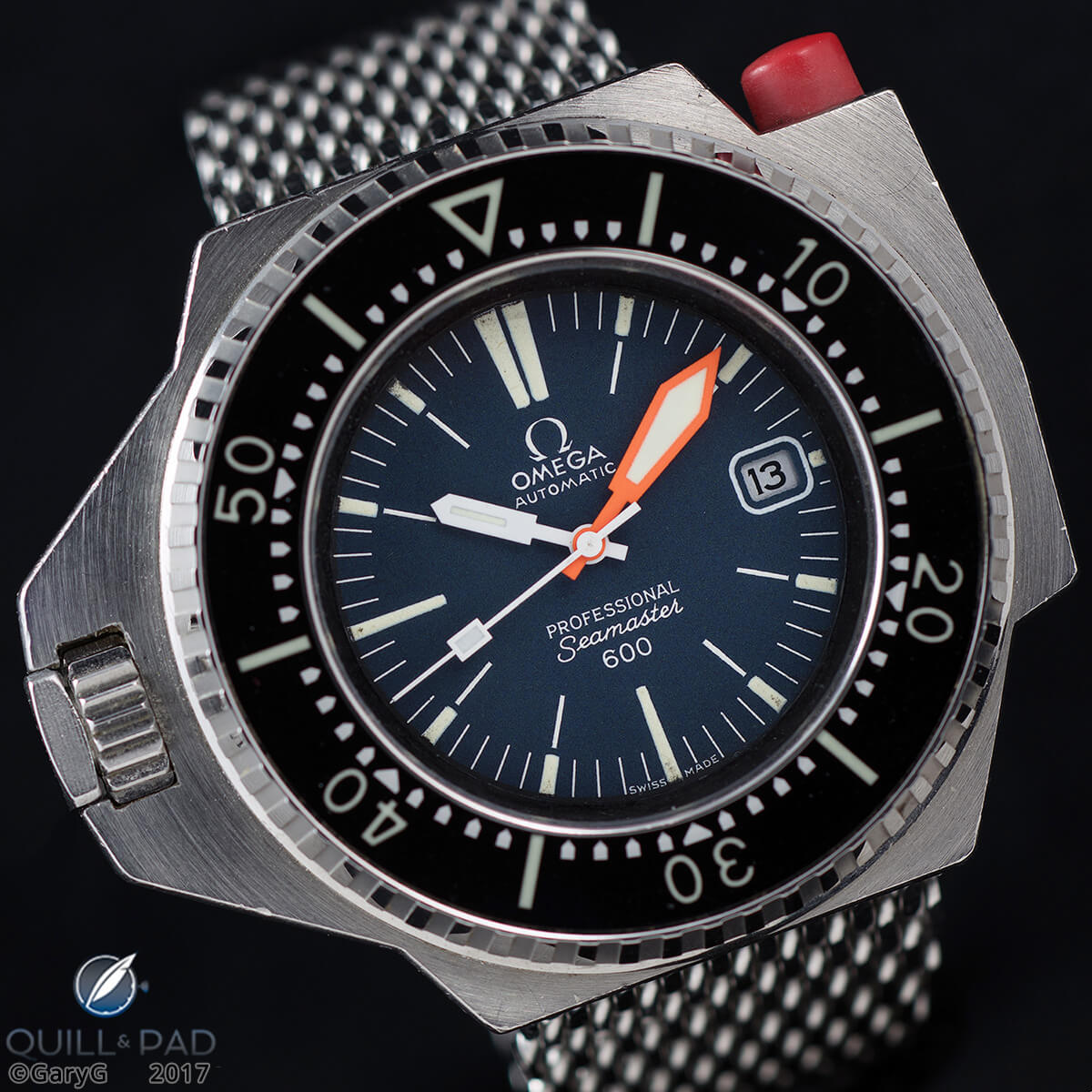
Vintage Omega Seamaster Professional 600 Ploprof on mesh braclet
How to recognize good mesh
Good milanaise, which looks like finely knit metal when complete, can be generally recognized by the consistency and stability of its mesh.
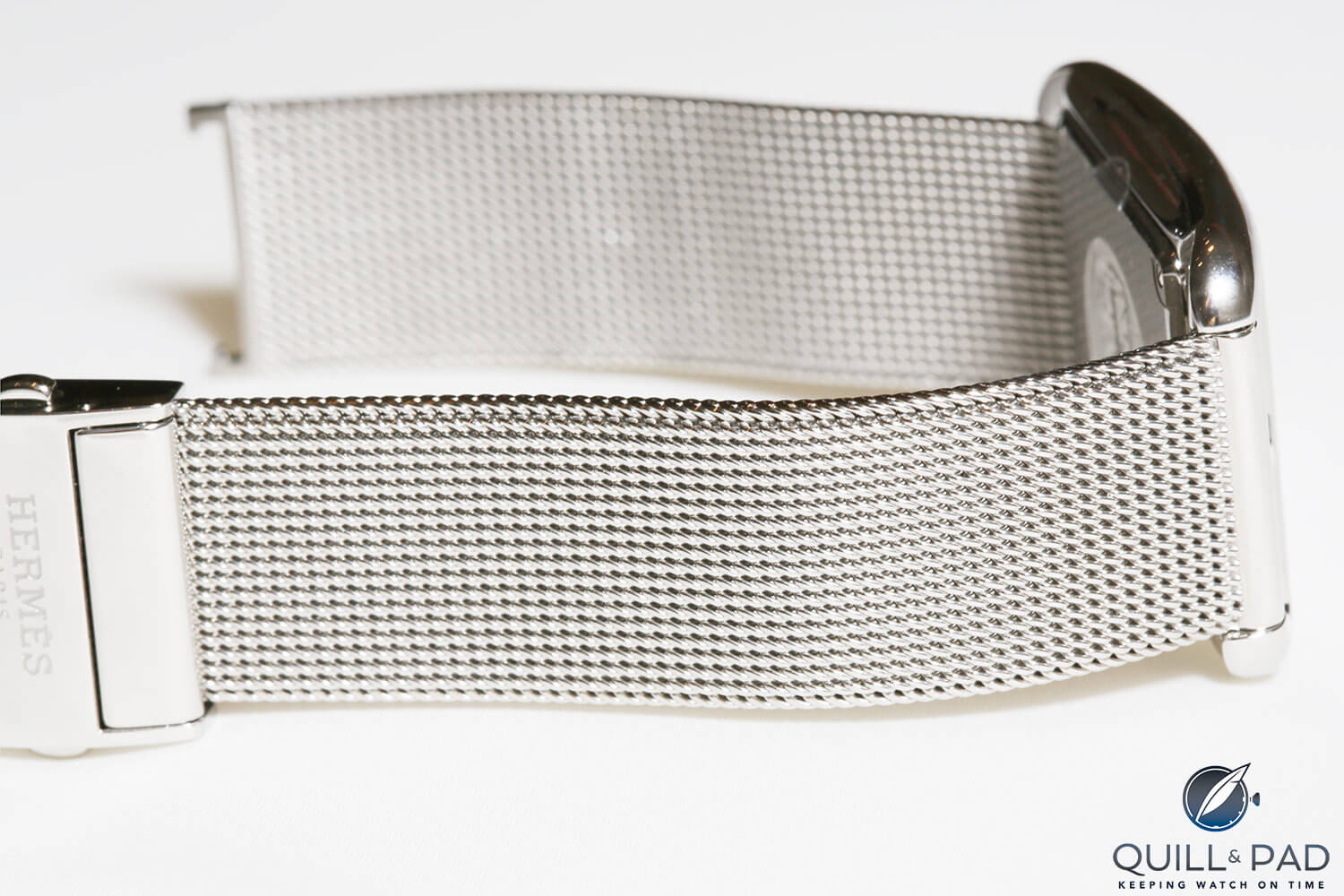
The Hermès milanaise bracelet as seen on the 2018 Cape Cod
It may not have any sharp edges and must feel like a cool, smooth material when put to the skin. It must hug the wrist and show good flexibility in one direction.
Though milanaise is currently not in over-abundant use in the luxury watch industry, its beauty and smoothness can hardly be topped. It is the amount of time invested into a milanaise bracelet that today makes it more luxurious and expensive than other types of watch bracelets.
Standout watches on mesh bracelets
Most recently, I was entirely captivated by the Gustafsson and Sjögren (GoS) Sarek Midnight Blue, one of the Swedish duo’s individualized Sarek models with a 164-layer Damascus steel dial.
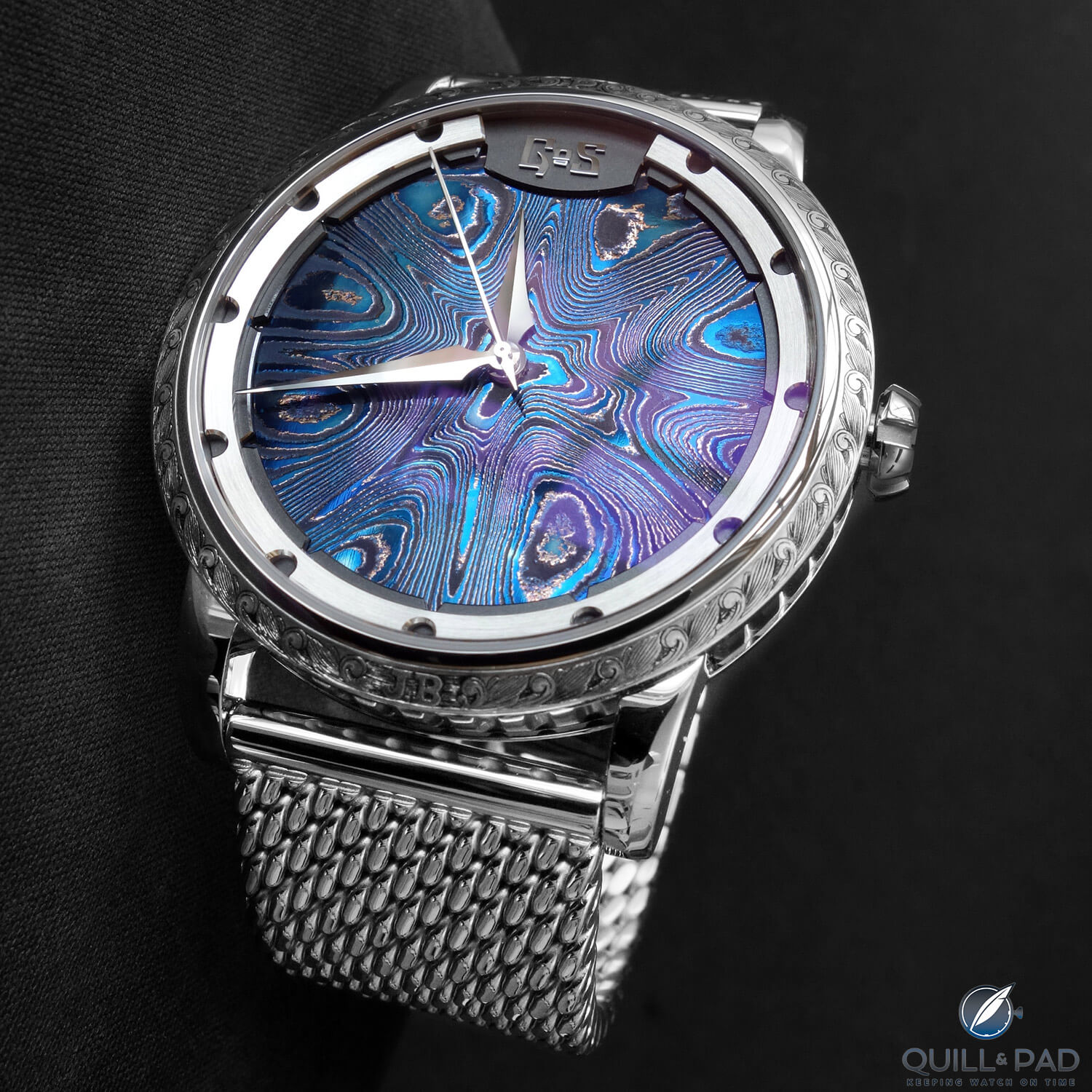
A unique GoS Sarek Midnight Blue with hand-engraved case on mesh bracelet
“The Ice Blue, Midnight Blue, and an occasional all-purple dial are all finished and tempered by me in the GoS workshop,” watchmaker Patrik Sjögren recently told me of the vibrant colors. “I use traditional watchmaker finishing methods and heat tempering to achieve these results, but the Midnight Blue was something I developed by combining a technique I learned from Johan [Gustafsson] with traditional heat tempering. My goal was to achieve a dark and very elegant dial for a watch that would not be out of place when worn together with a tuxedo.”
Sjögren also explained that he can reproduce very similar colors for all Midnight Blue dials, but never exactly the same colors: the patterns will always be unique. While the look of the unique dial and hand-engraved case is in itself breathtaking, for me putting this combination on an amazing mesh bracelet just sealed the look.
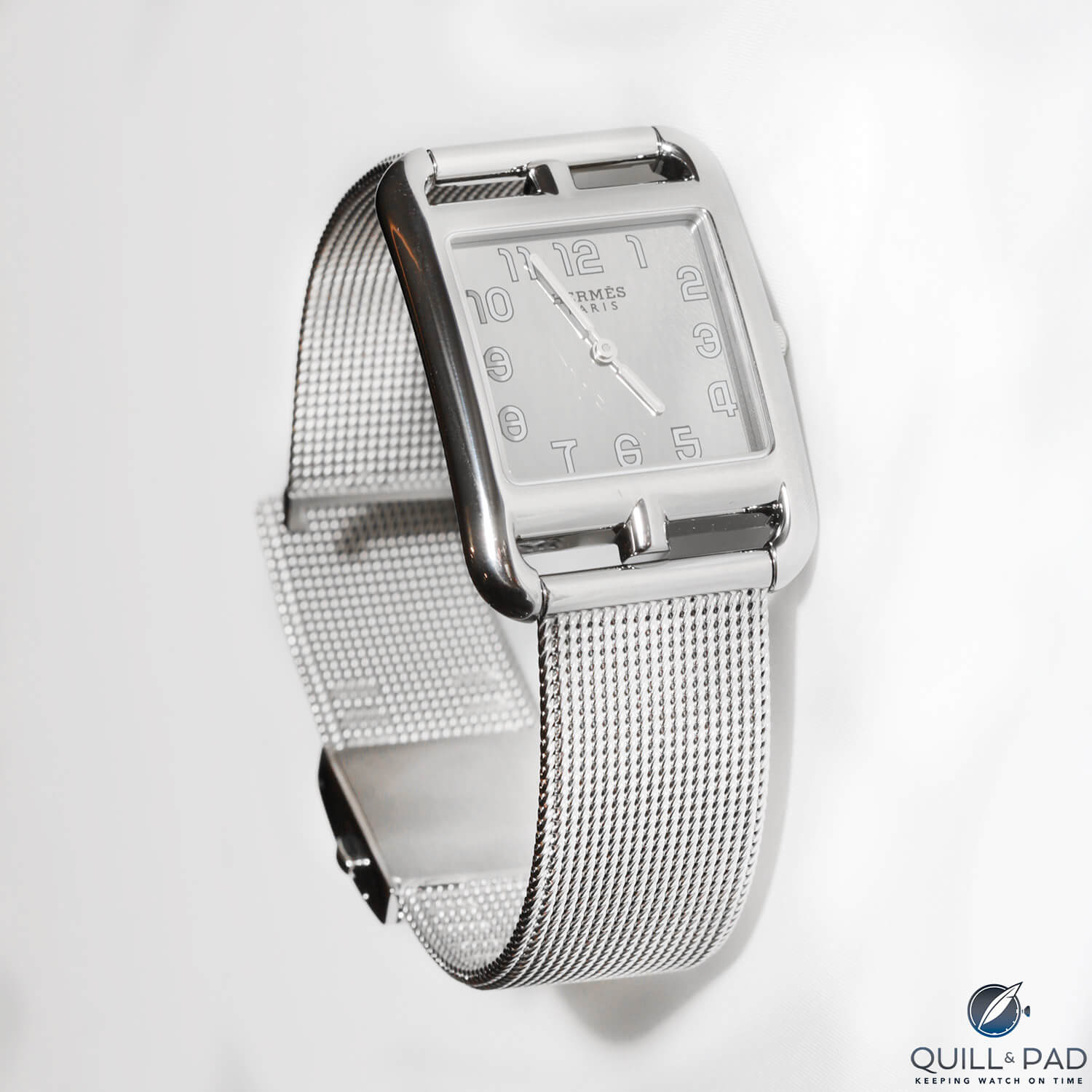
The 2018 Hermès Cape Cod on a milanaise Single Wrap bracelet
The SIHH 2018 revealed a couple of watches with mesh bracelets as well. One of these was the Hermès Cape Cod Milanese in two case sizes and in two “wrap” sizes: Double Wrap and Single Wrap. The Hermès-typical double-wrap strap that became known simply as the “Double Tour” invented by designer Martin Margiela in 1998 appears for the first time here as a supple, silky mesh bracelet.
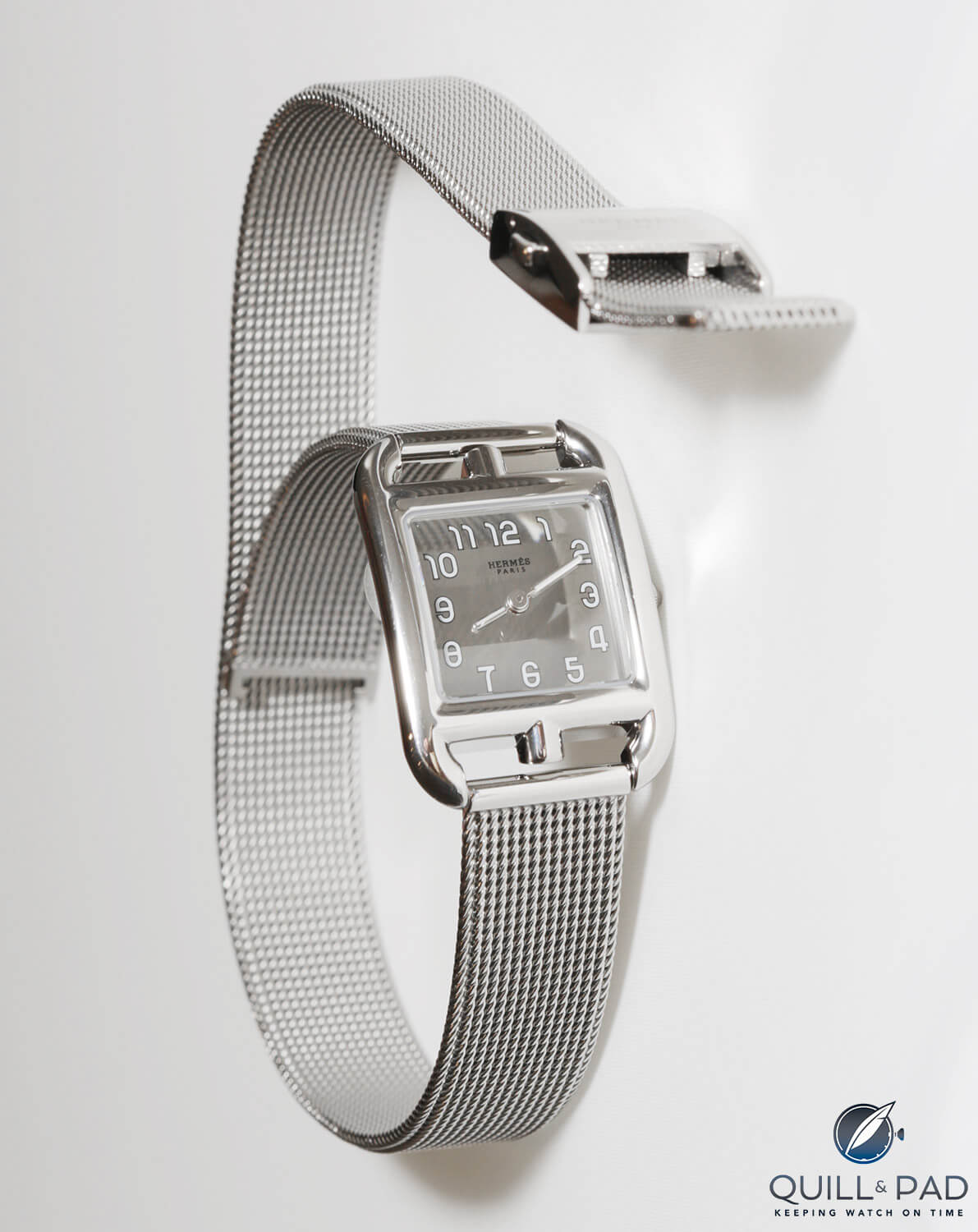
Hermès Cape Cod Double Tour Milanese as seen at SIHH 2018
La Montre Hermès creative director Philippe Delhotal told me that the house’s artistic director Pierre-Alexis Dumas gave him the order to ensure the mesh bracelet would be as comfortable and high-quality as an Hermès leather strap.
I am of the opinion the brand succeeded in this; during the SIHH I had a hard time putting the watches down, so engrossed was I in playing with these much-emulated, reinterpreted bracelets.
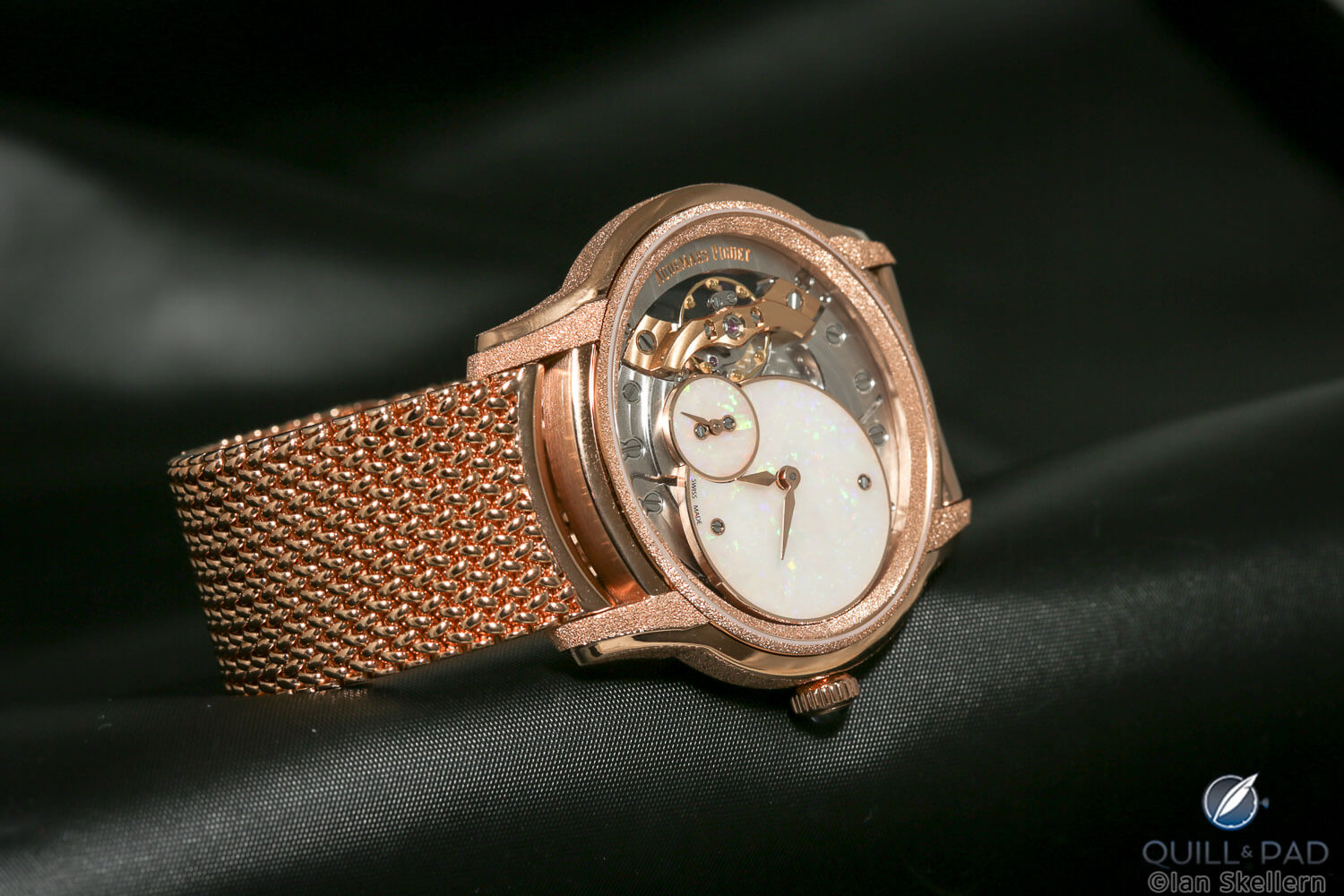
Audemars Piguet Millenary Frosted Gold with opal dial on mesh bracelet
Another watch on mesh that caught my eye at the 2018 SIHH was the Audemars Piguet Millenary (see the original version in Give Me Five! Scintillating Ladies Watches From SIHH 2015). This watch, in fact, has been fully re-dressed for sublime femininity with white opal dials, the brand’s own frosted gold case and lugs, and the jewelry-like gold mesh bracelet.
I was captivated.
For more information, please visit www.goswatches.com/sarek, www.hermes.com, and www.audemarspiguet.com/en/watch-collection/millenary.
Quick Facts GoS Sarek Midnight Blue
Case: 43 x 10.5 mm, stainless steel with crown shaped as Viking sword hilt (optional hand-engraved bezel, shown here with wildflower pattern)
Dial: 164-layer Damascus steel forged by Johan Gustafsson, finished and tempered to Midnight Blue color by Patrik Sjögren; each dial is unique in pattern and color
Movement: automatic Soprod A10 caliber with GoS triskele rotor, hand-finished
Functions: hours, minutes, seconds
Price: $9,500 plus applicable tax
Remark: five-year guarantee
Quick Facts Hermès Cape Cod Mesh Bracelet Large Model – Double Tour
Case: 29 x 29 mm, stainless steel
Dial: rhodium plated and mirror polished
Movement: quartz
Functions: hours, minutes
Price: €3,250
Quick Facts Audemars Piguet Millenary
Case: diamond-set or frosted gold pink gold or diamond-set white gold, 35.4 x 39.5 mm with crown set with sapphire cabochon
Dial: white opal disks, 0.85 ct for hour/minute subdial and 0.10 ct small seconds subdial
Movement: manually wound Caliber 5201, 49-hour power reserve, 3 Hz/21,600 vph frequency
Functions: hours, minutes, subsidiary seconds
Price: $47,000 (frosted pink gold)
* This article was first published on February 21, 2018 at Milanaise Mesh Watch Bracelets: What’s The Attraction?
You may also enjoy:
Leave a Reply
Want to join the discussion?Feel free to contribute!





















































That RGM is lovely, Elizabeth. You still got it?
Absolutely!!
Can anybody tell me the model of Brietling shown at the very top (the reverse panda dial)? Thank you.
It’s the Chronoliner
Thanks!
Thanks for this interesting & informative article!